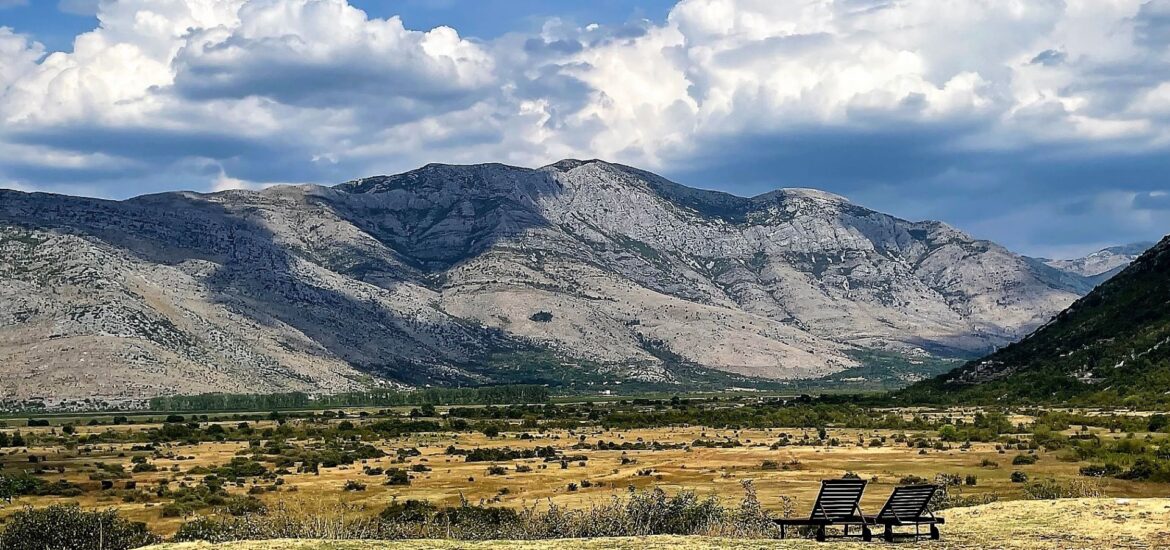One of our favorite destinations for day trips during our holidays in Slano is the region of Popovo Polje in Herzegovina.
This is a valley or „field“ that stretches between Hutovo Blato and Trebinje with a surface of 45.9 km2; it is 31 km long and 1.5 km wide. Popovo Polje ( „Priest’s Field“ in translation) is located in the direct hinterland of the Adriatic coast and it is surrounded by karstic mountains. The Trebjišnica, a typical „sinking river“, flows through the middle of the plain.
We have visited this area several times and each time we discover something new. On this occasion we explored the southern part of Popovo Polje between Hutovo and Zavala, following the regional road that passes along the historic railway. Some parts of the field are cultivated, but a larger surface is still barren and undeveloped.
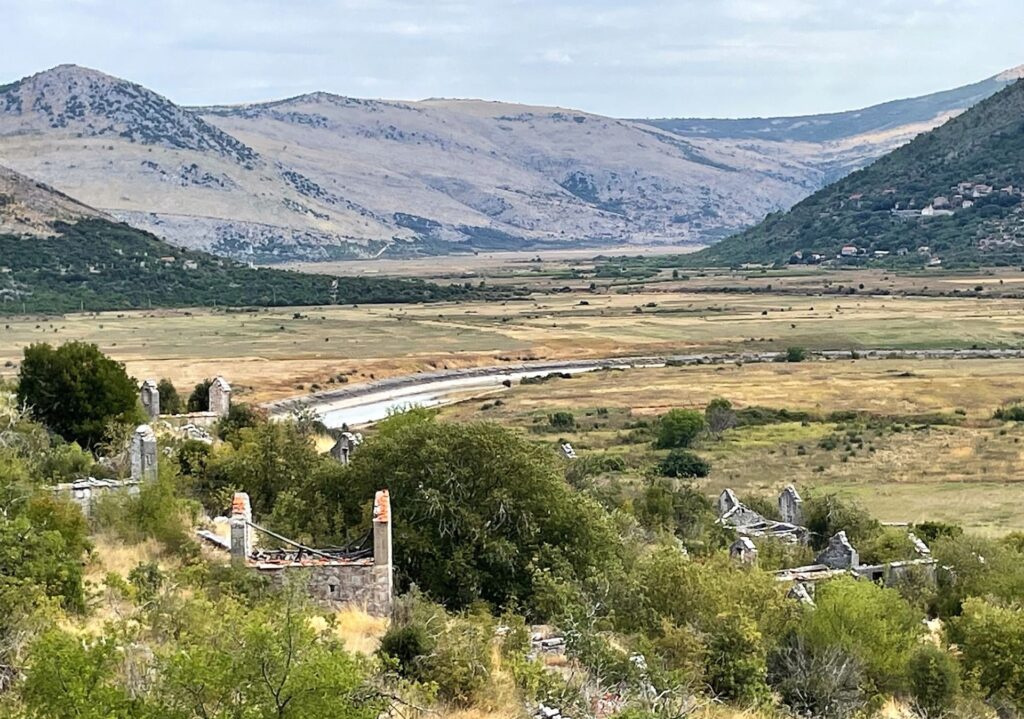
Apart from Vjetrenica Cave and Zavala Monastery, there are a lot of old, mostly abandoned villages and we even found an interesting necropolis – calle Međugorje – with around 60 „stećci“ (medieval tombstones) near the village of Glumina.
After leaving the crowded coast around Dubrovnik, it was a relief to travel though an almost empty space. A narrow asphalt road led us from Slano to the small border crossing with Bosnia and Herzegovina at Orahov Do and further through a rough and mountainous karst area to the village of Ravno. The field of Popovo Polje stretched in front of us, covered by arid grassland.
Hardly any traffic on the road, although we were in the middle of the summer season. I read that the total population of the area is no more than 300. We took the direction towards Hutovo and along the road we saw bunches of ruined stone houses and villages which seemed to be totally abandoned. The region really looks like no-man’s land, although it is clear that this karstic field is very fertile.
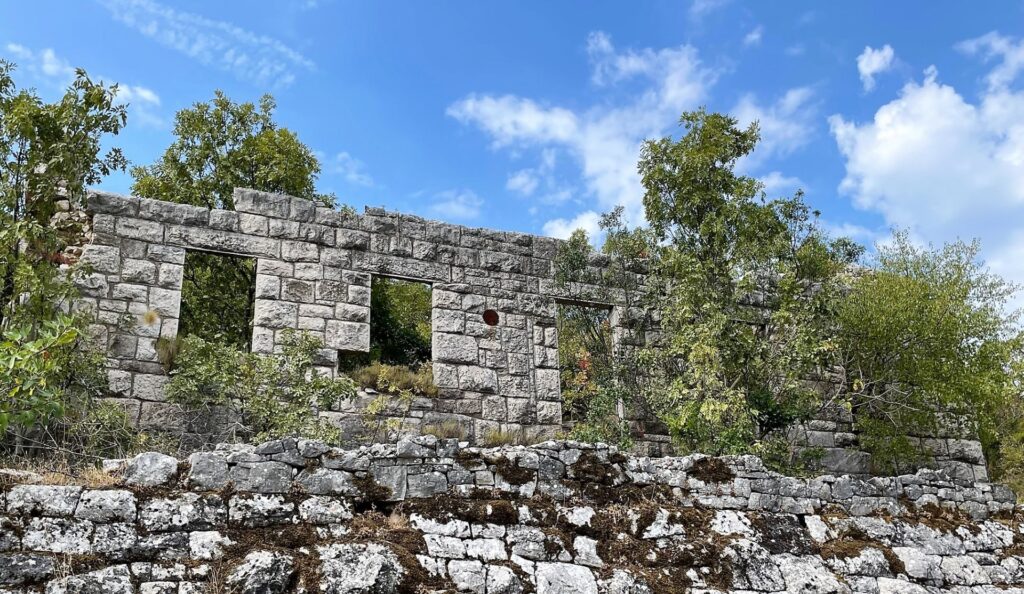
In the past, Popovo polje was much more alive than today. In the early 1900s, a narrow-gauge railway was built, and the popular „Ćiro“ connected many villages. But when the railway was closed in 1976 and the Adriatic Highway got more important, many people left the region.
However, the remains of the railway and railway stations are still existing and nowadays, they are used for other purposes. As Herzegovina is very popular among lovers of old railways and steam trains, the authorities decided to revitalize the line by building a cycling trail, which is now promoted within the tourist offer of Herzegovina under the name of „Ćiro“. There are several signposts and information boards along the road, telling us the story of this historic railway. Honestly speaking, we did not see any bikers, but it’s true, the day was very hot…
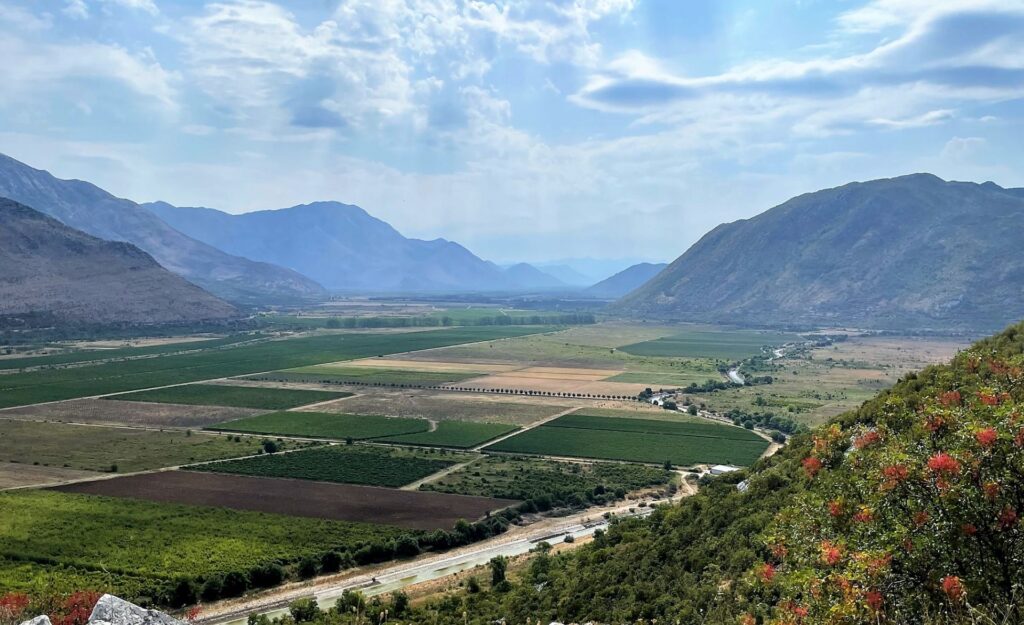
Driving along the valley, we discovered more and more vineyards and other cultivated surfaces. I am sure that Popovo polje could be an important factor for development in the future. Maybe we could even compare it with the Neretva Delta in Croatia!
The Trebišnjica river flows through the middle of Popovo Polje. It is one of the longest sinking rivers in the world, which means that 97 km of its total length (187 km) flows under the ground. A part of the river is canalized (65 km), so that it can be used for agriculture and hydro-electric energy. Near Hutovo is Vrutak Lake, a storage lake with a hydro-electric power plant.
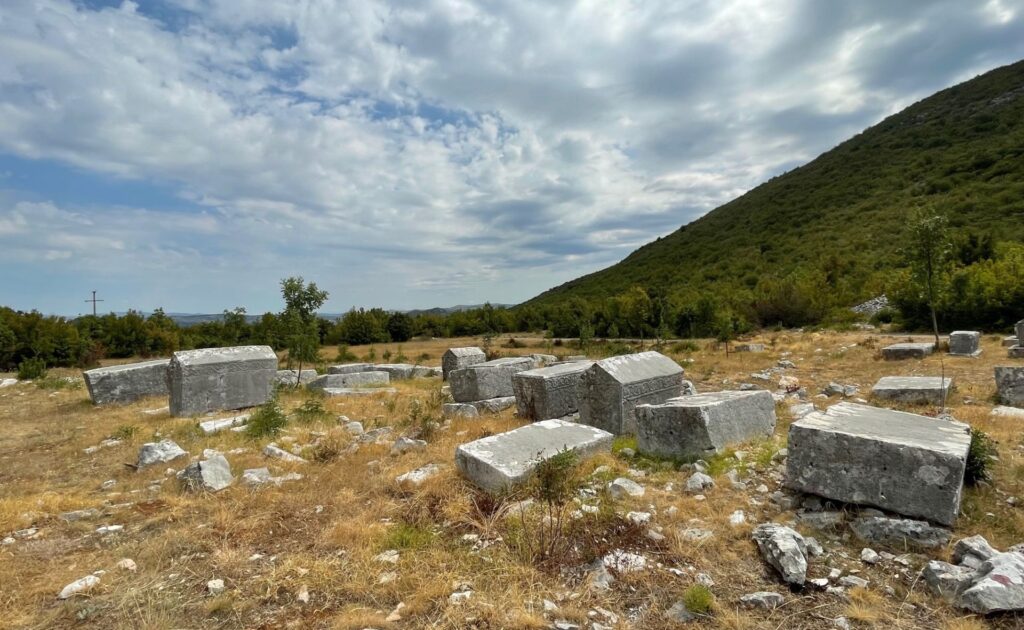
Passing Vrutak Lake we turned right behind the power plant and we followed the signpost „Necropolis Međugorje Glumina“, which took us behind the lake uphill to an abandoned place full of „stećci“ (medieval tombstones). Some tombstones were of a rare beauty, depicting hunters, dogs and a wounded deer. Other ones showed dragons, crosses and various decorations. We are always surprised when we find such medieval tombstones in the middle of nowhere. Who made them? When? Why just here in the barren mountains?
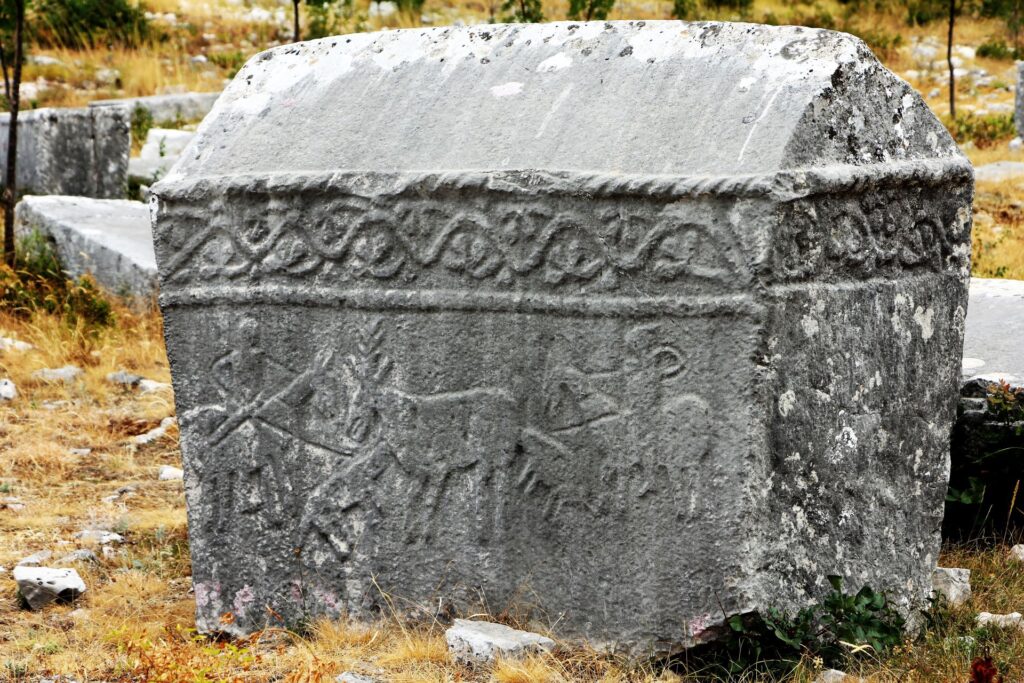
We continued the narrow road towards Glumina, an almost abandoned village. But it was worth the effort. On both sides of the road we saw large cairns, which were obviously ancient grave tumuli. A tumulus is a mound of stones raised over one or more graves. There are a lot of them in Herzegovina, but, unfortunately, I could not find any information about these ones.
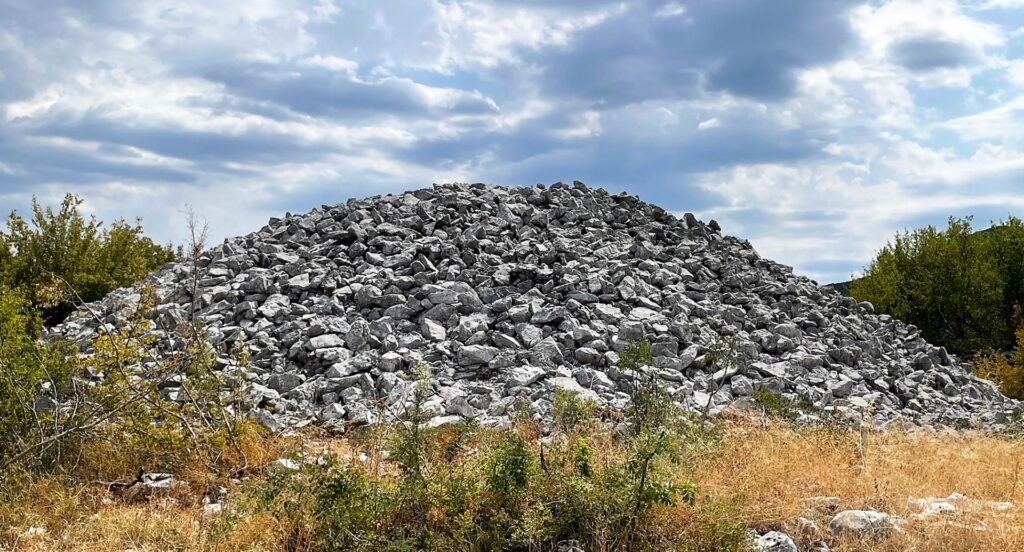
Driving back to Zavala, we understood that there is much more to see in this region. Zavala is a place we had already visited before. It is famous for the Vjetrenica Cave and the Zavala monastery.
Zavala monastery is a sanctuary that was established by the first Christian Roman Emperor St. Constantin. It contains beautiful medieval frescoes, but most fascinating is its position, nested below the Ostrog hill. The frescoes were painted by the greatest Serbian painter from the 16th century – Gregorije Mitrofanović.
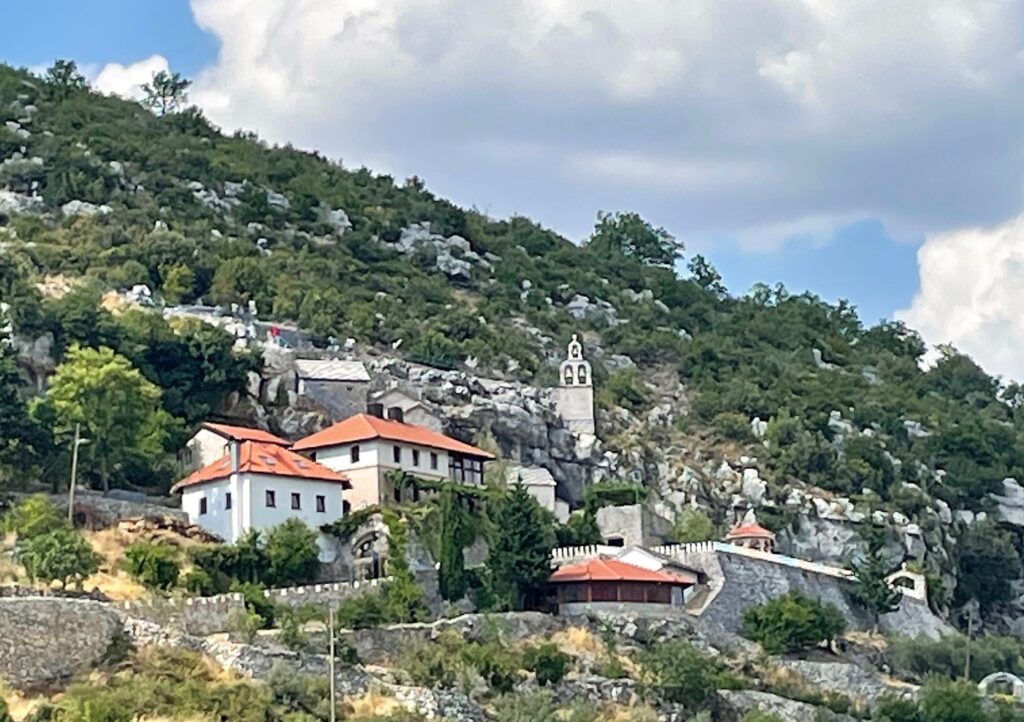
Vjetrenica Cave is located only 650 m from the Zavala monastery. It is home for more than 200 different animal species adapted to life in the eternal darkness, including the Human Fish.
Most tourists traveling along the Adriatic Highway from the Montenegrin border in northern direction do not know anything about „Vjetrenica“, although it is located only 30 km north from Dubrovnik near Slano. Strange enough, it is one of the most impressive caves in the Dinaric Alps mountain range!
The old railway station of Zavala has been transformed into a nice traditional restaurant. We had a real “Herzegovinian” snack there, called “Zavala Plate”: excellent smoked ham, cheese and “kajmak” from the region. To be recommended!
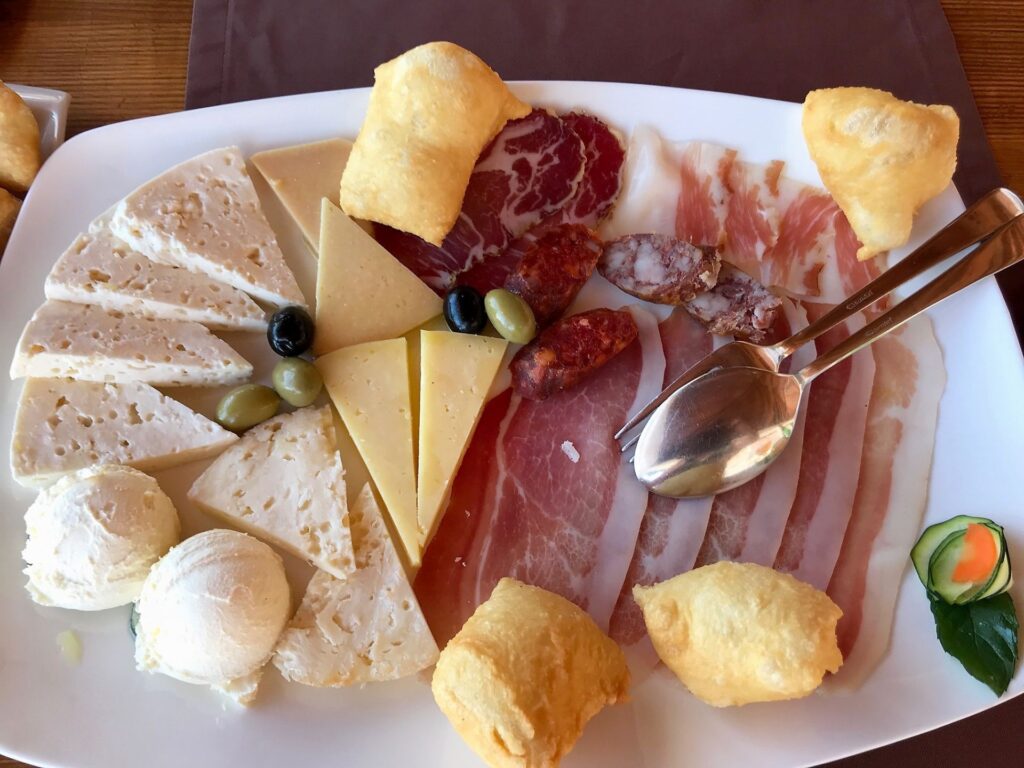
Once more, we succeeded in spending a nice and quiet day, enjoying the untouched nature of Herzegovina. This region is so close, not only to the Dubrovnik area, but also to Montenegro. Discover Popovo Polje, it is a magic experience!
